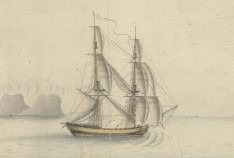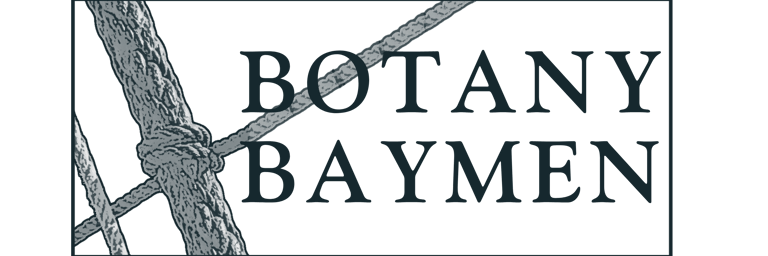HMS Supply or HMAT Supply?
There has been a great deal of interest lately among students of Australia’s First Fleet about the correct title of the Supply, the small naval tender which accompanied the convoy. Is it H.M.S. Supply or H.M.A.T. Supply?
Gary L. Sturgess
7/26/20242 min read


If we are interested in how contemporaries described her, then neither. The formal title, used in the ship’s log, was His Majesty’s Armed Tender Supply. The phrase ‘His Majesty’s Ship Supply’ does not appear in any of the sources.
The abbreviations H.M.S. or H.M.A.T. seem not to have been used in the 18th century. Closest is H.M. Armed Tender Supply, used by David Blackburn, her sailing master, as the place from which his letters were sent in the course of the voyage.[1]
Prior to being taken up for the First Fleet, the Supply was described as a transport. The first known reference her in the official papers was in a letter from the Navy Board to the Secretary of the Admiralty on the 26th of September 1786, asking whether ‘the Supply transport of the burden of 175 tons’ might not serve as a tender to the Berwick (the original name of the Sirius) on the voyage. The last reference to her as a transport is in a letter of the 24th of October, when she was being fitted with her guns.[2]
Having been formally commissioned and fitted as an ‘armed tender’, that was her correct title, in the same way that there were ‘armed transports’, ‘armed storeships’ and ‘armed victuallers’, ‘armed schooners’ and ‘armed cutters’, and mentions of (say) ‘His Majesty’s Armed Ship Ranger’, and ‘His Majesty’s Armed Ordnance Ship Active’ (the latter two, merchant ships employed by the Navy under contract).
The full title was rarely used – she was usually referred to as ‘the Supply armed tender‘, ‘the Supply tender’, or most commonly ‘the Supply’. Her muster book and pay book used ‘Supply armed tender’. First Fleet correspondents and journal-keepers used all of these names in roughly similar proportions.
In her layout, she was a brig, a smaller vessel with two masts square-rigged (as opposed to a ship which had three). Blackburn wrote to his sister in early April 1787, ‘she is a brigg and I shall be paid only as a sixth rate’, and several weeks later, ‘the Armed tender is a Brig, not commanded by a Captain’.[3] It is for this reason that she was occasionally referred to in the records as ‘His Majesty’s Brig Supply’. ‘the Supply armed brig’ and ‘the Supply brig’.
However, it was not uncommon for her to be informally described as a ship. Thus, Blackburn wrote, ‘I set out tonight for Portsmouth to join my ship now laying at Spithead’ and ‘It will be impossible for me to get leave of absence any further from the ship than Portsmouth’.[4]
So if we wish to be historically accurate, ‘H.M. Armed Tender Supply’, or ‘Supply armed tender’, but not ‘H.M.A.T. Supply’ and definitely not ‘H.M.S. Supply’. However, it is technically correct to refer to her as ‘His Majesty’s Brig Supply’ and informally as a ship.
______
[1] David Blackburn to his sister Margaret, 2 September & 9 November 1787, ‘Margaret Blackburn – Letters received from her brother David Blackburn, 1787-1791’, State Library of NSW, SAFE/MLMSS 6937.
[2] Navy Board to Philip Stephens, 26 September 1786, UK National Archives (hereafter TNA) ADM 106/2213/435; Navy Board to Philip Stephens, 24 October 1786, TNA ADM106/2622/454.
[3] David Blackburn to his sister Margaret, 6 April & 6 May 1787, ‘Margaret Blackburn – Letters received from her brother . . .’, op. cit.
[4] David Blackburn to his sister Margaret, 6 & 19 April 1787, ibid.
Contact us
Connect with us
Botany Baymen acknowledges the traditional custodians of country throughout Australia and respects their connection to land, water and community.
© Botany Baymen 2024. All rights reserved.
You may download, display, print and reproduce this content for your personal or non-commercial use but only in an unaltered form and with the copyright acknowledged.

